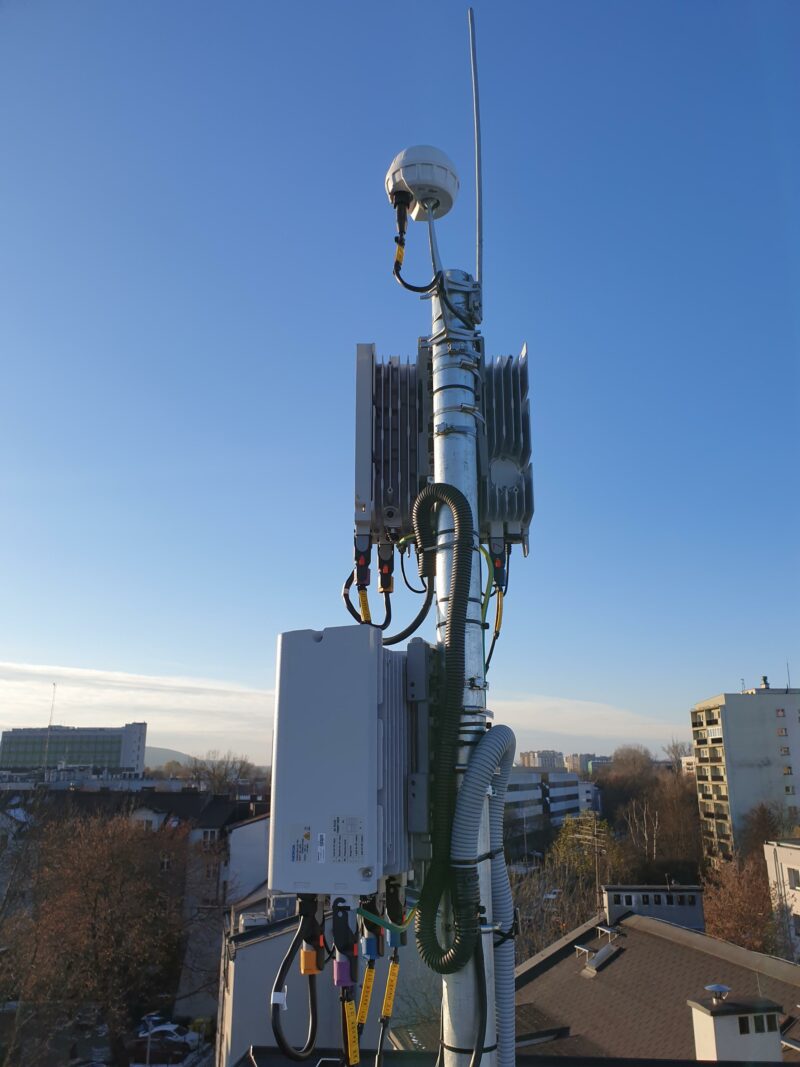The AGH University of Science and Technology in Krakow is one of the few
in Poland to have received a radio license from the Office of Electronic Communications to use their own private 5G network.
The activation of the 5G network at AGH is the result of the completed “National Laboratory of Networks and 5G services along with their surroundings: PL-5G” project, which was carried out in a consortium of the Academy with the Warsaw University of Technology (project leader), the Institute of Communications -National Research Institute, the Wroclaw University of Technology, the Gdansk University of Technology, and the Institute of Bioorganic Chemistry of the Polish Academy of Sciences – Poznań Supercomputing and Networking Center.
The main goal of the project was to build a unique national research infrastructure for practical research on 5G technology and services.
Prof. Jerzy Lis, Rector of AGH in Krakow, emphasizes: – The significance of this project for the dynamic development of technology is very important. In the near future, we can expect widespread implementation of 5G solutions in national operator networks, which will lead to significant development of modern, as well as hitherto unavailable services. A dynamic growth of private 5G networks is also predicted, which will be built by companies and local government units in the coming years. Thus, the 5G network at AGH will allow us to conduct a number of tests, research, and analyses in advance, which are important from the perspective of both the operator and the end user – data transmission delay, speed of transmitted information, the possibility of using artificial intelligence algorithms or connectivity between devices.
As part of the project, with a total budget of nearly PLN 225 million (AGH had a budget of about PLN 25 million), the university created four laboratories located in the Institute of Telecommunications (Faculty of Computer Science, Electronics and Telecommunications):
- 5G network laboratory,
- Simulators and measuring equipment laboratory,
- Lab of the 5G network environment in the field of IoT research,
- Lab of the 5G network environment in the field of multimedia research.
– Each of our four laboratories is adapted to provide a range of services related to 5G networks – explains Prof. Marek Natkaniec from the Institute of Telecommunications, who coordinated the construction of laboratories and the implementation of the 5G network at AGH. – We purchased over 1000 devices related to 5G technology, which allowed us to prepare dozens of different laboratory positions. The list of proposed services seems to be endless. Thus, we will be able to conduct world-class scientific research using access to a fully functional core and access 5G network, programmable radio devices, a data storage and processing center, a 5G network built on components from various OpenRAN manufacturers, various 5G customer terminals or traffic generators. Thanks to the implementation of such extensive research positions, we are also able to provide commercial services related to access to professional diagnostic equipment, chambers for damping radio signals or virtual space, as well as devices allowing for objective, quality, and performance measurements of the 5G network – enumerates the scientist.
All units participating in the project were connected by the 5G network core. The network built between regions works, unlike operator 5G networks launched so far in our country, on the 5G Standalone (SA) architecture, which means that it can operate independently of previous generations of cellular networks. The network launched at AGH enables the allocation of resources for individuals or services based on so-called network slicing, which will be of great importance in industry and business. In addition, AGH has launched a 5G network in the millimeter wave range, which will allow prototyping and testing new services related, among others, to precision locating, access to virtual and augmented reality, control of industrial robots and all other services requiring very high throughput. At AGH, a dedicated UPF (User Plane Function) server was also installed, which allows for very fast information processing close to the user, reducing system response delays to even 1ms (from 5ms achieved in typical 5G networks). AGH, as the only unit in the consortium, also launched eight 5G network transmitters inside the building, which will enable scientific research related to optimizing cell switching, as well as conducting experiments independently of weather conditions.
From the perspective of, for example, a mobile phone user, the 5G network is the fifth generation of telecommunications networks and a development of the widely used LTE fourth-generation network by operators. The latest generation of the network is also a response to the constantly increasing data transmission or network connection of an increasing number of devices. For the end user, this means a faster connection and greater comfort of using smartphones, computers, laptops, or TVs. For entire communities, this means more efficient functioning in terms of providing online services, operating businesses, hospitals, schools, or research centers.
The project consortia were granted permission to use the 5G network until 2028.
